Quilted Car Seat Cover Tutorial: An easy-to-follow tutorial to sew your own car seat cover using multiple fabrics! Perfect for baby!
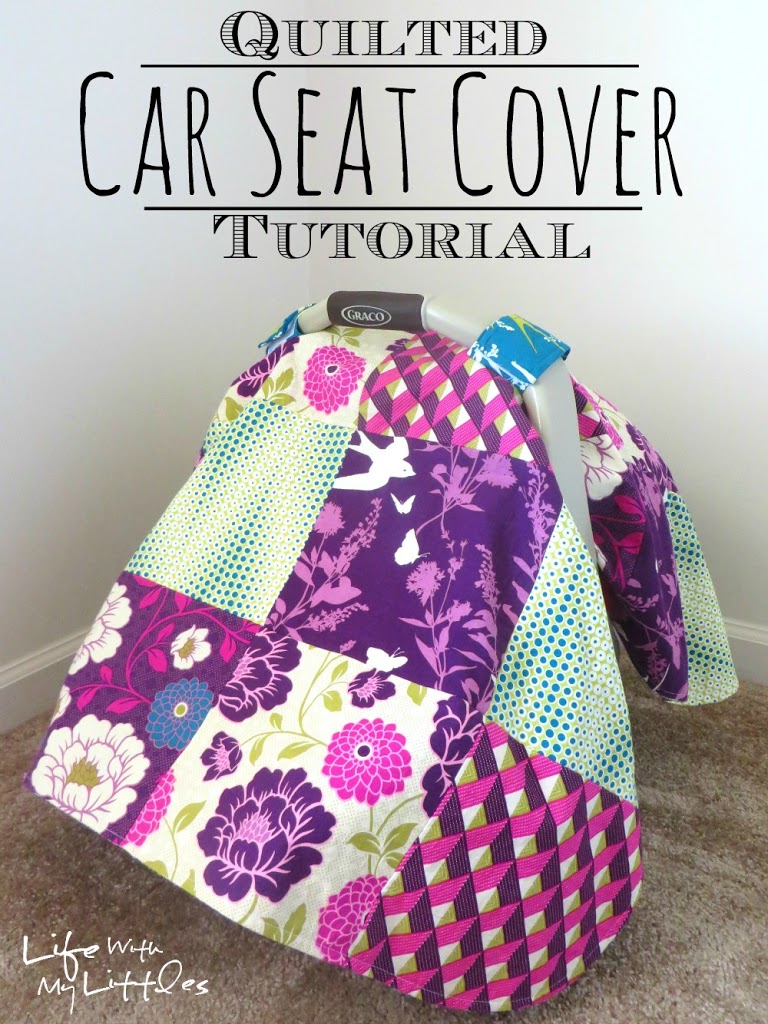
I have gotten so many compliments on this car seat cover I made for Little A!! I have been using it the last four months and I still love everything about it! So today I want to share how I made it with you!
Before Little J was born, I made a tutorial and sewed him a car seat cover. It was perfect and beautiful and lasted really well the whole time he was in his little carrier car seat. So with Little A, I knew I was going to have to make her a car seat cover, too. The only problem was I couldn’t find just one fabric that I loved for the top. I kept finding collections that I was falling in love with. I decided the only solution was to sew a quilted car seat cover with six different patterns on top and another one on the bottom. And it turned out PERFECT!
Let me first say that my favorite place to buy fabric is Etsy. There are a lot of different sellers willing to work with you and get all the designer fabrics you want. Plus, I can spend hours looking at different patterns. For this car seat cover, I used the Bramble palette in Joel Dewberry’s Bungalow collection. All 100% cotton and all 100% beautiful. I purchased my fabric from LiMa Sews (they have so many gorgeous patterns and are really great to work with) and it arrived looking fantastic.
Okay so now that you are also in love with my fabric, we can begin!
Materials:
- 6 fat quarters for top and straps
- 1 yard for bottom (you may need more if you have a directional fabric)
- 3 yards fusible interfacing (optional, but it makes the quilting so much easier)
- 6″ of 2″ wide sew-on velcro
Step One: Pre-wash your fabric and interfacing. You want to pre-wash both because if you only pre-wash your fabric, you might find that your fabric and interfacing shrink differently after you wash your completed project. Bad. So pre-wash both your fabric and interfacing. And duh, don’t put your fusible interfacing in the dryer because it is heat-activated. Let it dry over the shower curtain rod or something. And why is pre-washing necessary in the first place? Well, if you are using cotton fabrics, cotton shrinks. So you want to make sure that your final project doesn’t shrink once you wash it. That’s why you make it a certain size to begin with, right? So seriously. Just pre-wash.
Step Two: Iron your fabrics to get out creases and wrinkles. You want to cut flat fabric so that when you line it all up, it matches.
Step Three: Cut five of the fat quarters into 9×10″ squares. You will have a little left over so don’t just cut down the middle both ways. After you cut, you should have 20 squares.
Step Four: Iron your interfacing onto the back of your 20 squares. The easiest way to do this is to spread out your interfacing and then put all your squares on it to make sure they fit. Then cut them up so that you have little interfacing and fabric squares. Then you can just iron them on and you won’t have to worry about running out of interfacing or doing the whole 3 yards at once.
Step Five: Trim your squares so that the interfacing is the same size. I had only a little bit to trim around the edges, but you want them to match up so sewing is easier.
Step Six: Decide what pattern you want your squares to be in. I lined all of my squares up on the ground and then took a picture to make sure I wouldn’t forget if they got out of order a little between sewing. You will want to make sure that you have the 9″ edges along the top and bottom and the 10″ edges along the left and right. Otherwise, when you sew them together you will end up with a big square that is the wrong dimensions and it won’t match up with your bottom fabric. So be aware of that. Also, you will have 4 squares by 5 squares in order to get it the right size. 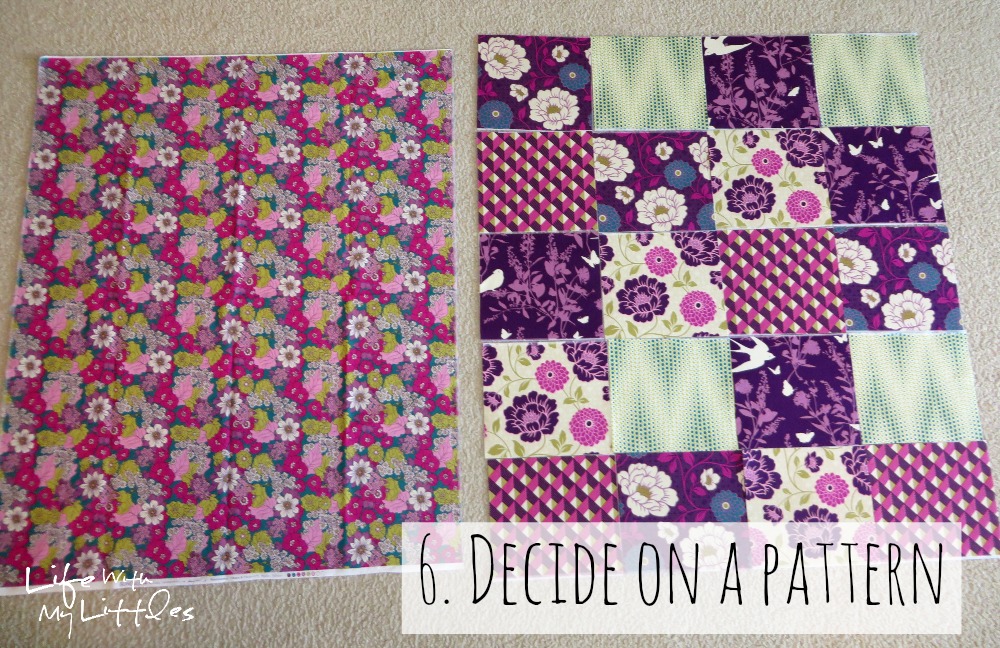
Step Seven: When you start sewing, you will want to sew your squares together in rows, and then sew those rows together. So for this step, you will want to start on either the top or bottom row, and sew two of the squares together. You want to line them up, then pin them right sides together. Then sew along that side. Make sure you have a 1/2″ seam.
Step Eight: Keep adding squares on, lining them up and pinning them each time. Sew them together until you have five rows.
Step Nine: Press open your seams. Use an iron to flatten the seams open.
Step Ten: Start sewing the rows together. Start with the two bottom (or two top) rows. Line them up, right sides together, pin them, and sew with a 1/2″ seam.
Step Eleven (not pictured): Press open the seams again so the quilted top lies flat.
Step Twelve: Line up the quilted top and the bottom fabric, right sides together.
Step Thirteen: Using a large bowl as an edge, trim the corners so they are curved.
Step Fourteen: Pin the top and bottom together all the way around.
Step Fifteen: Starting at the top/back (the top of the fabric if it is directional, or whichever side will be covering the back of the carseat), sew all the way around the car seat cover, except for a small six inch opening at the top/back, using a 1/4 inch seam.
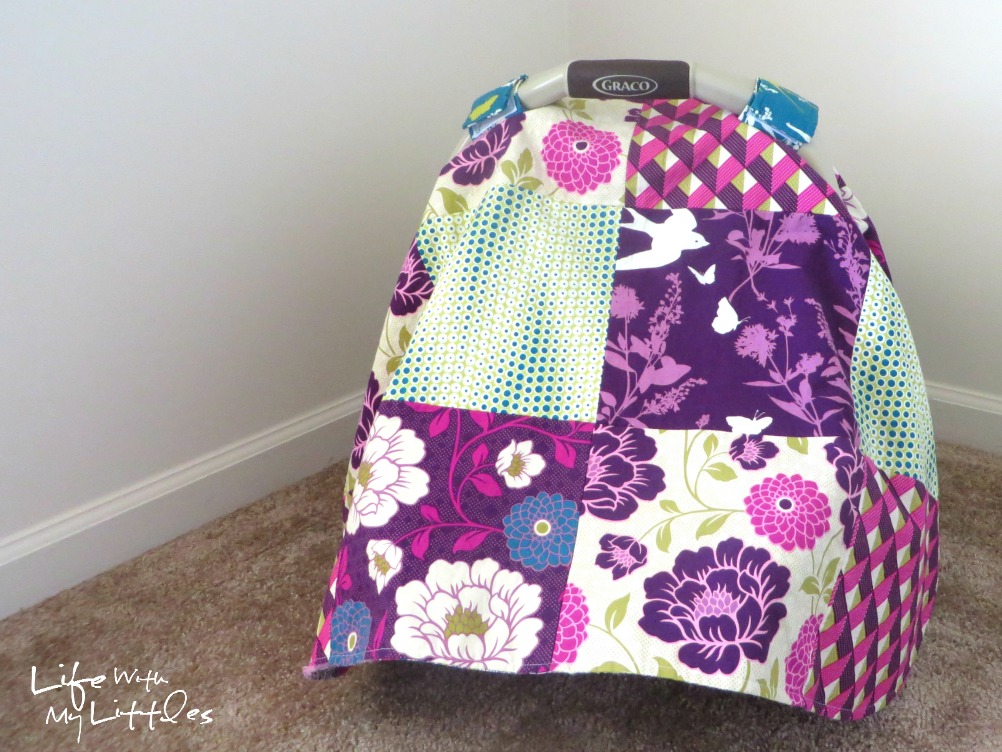
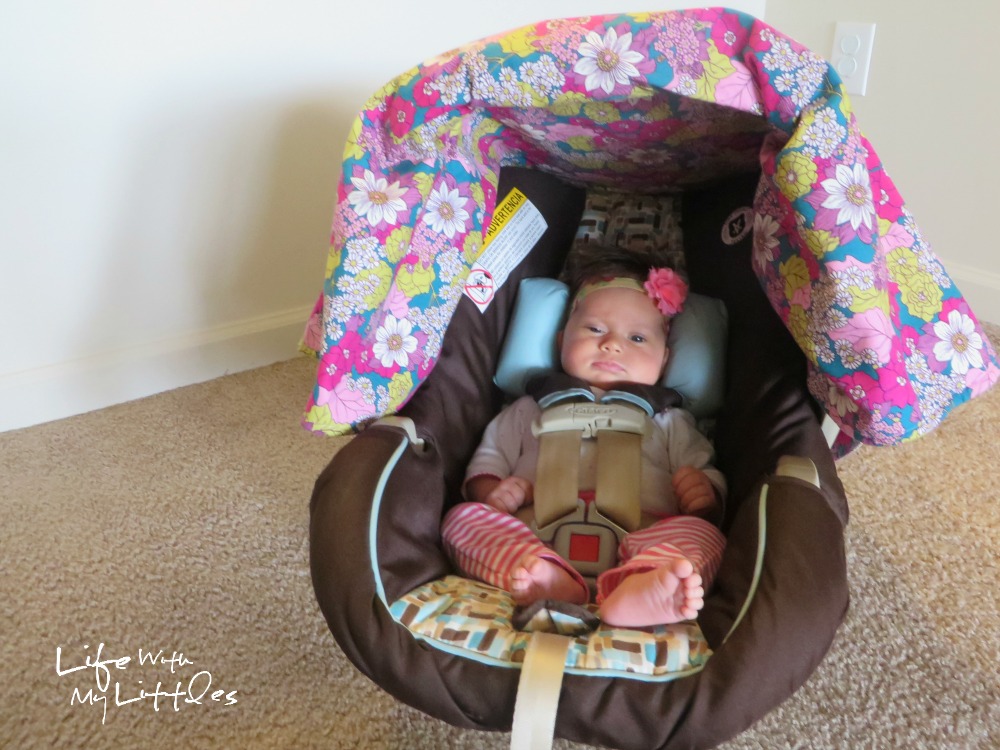
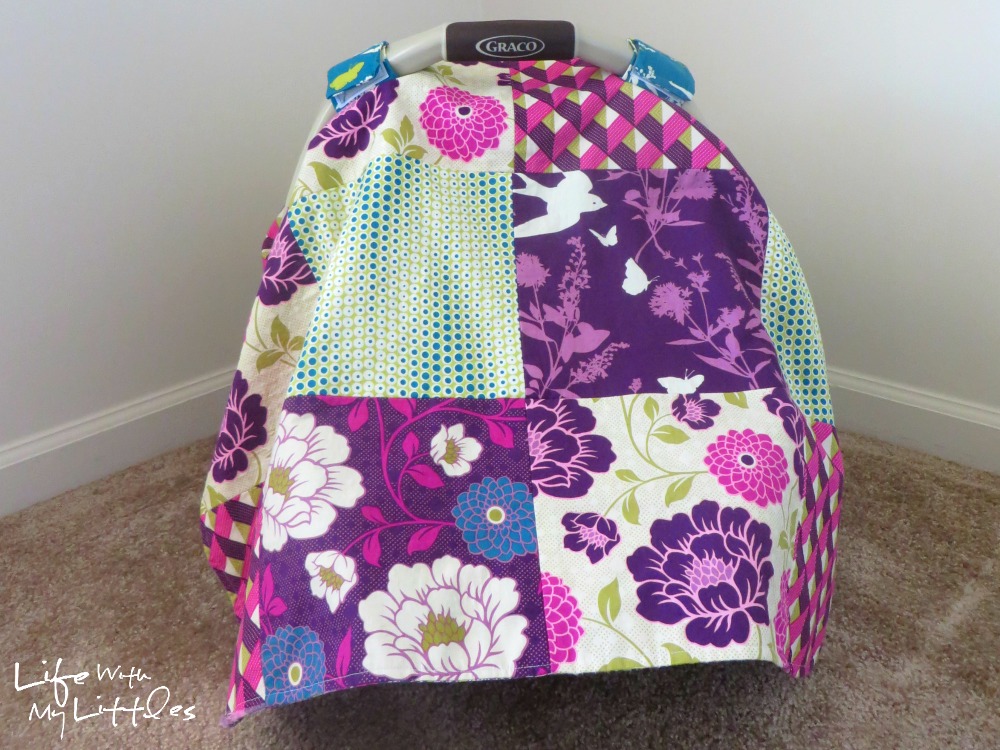
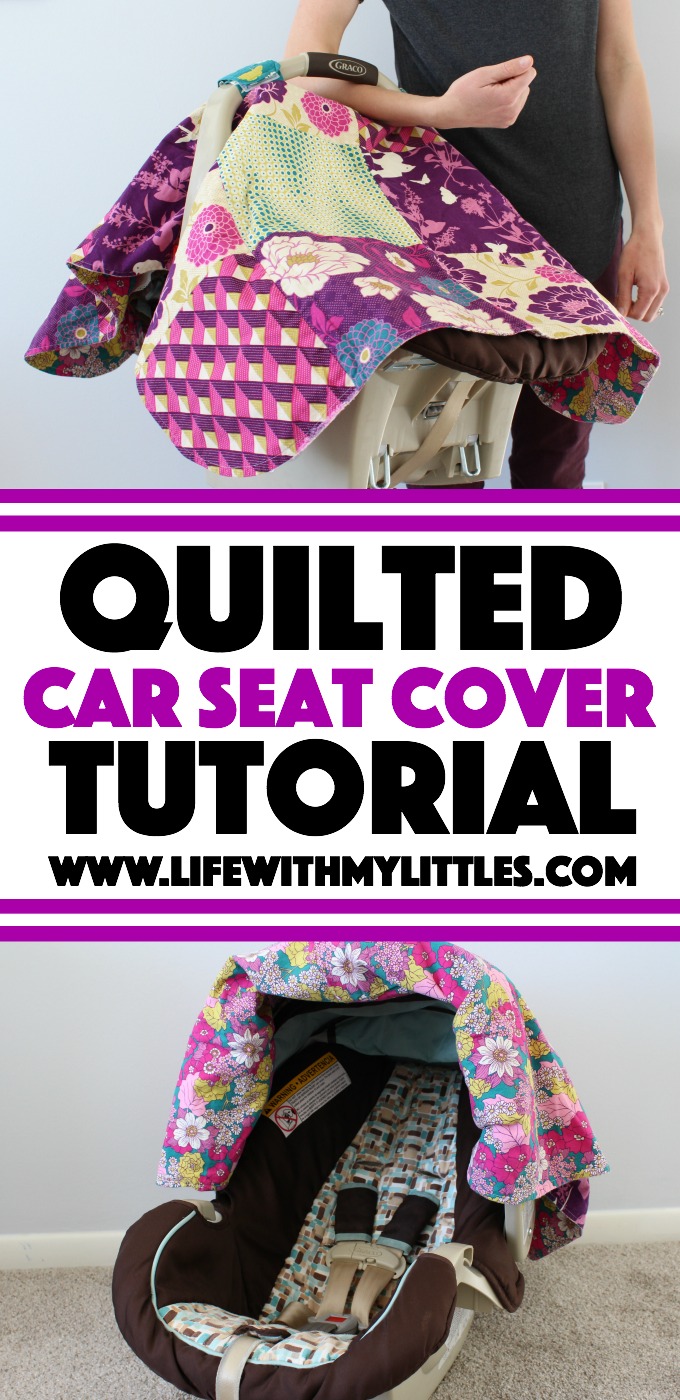
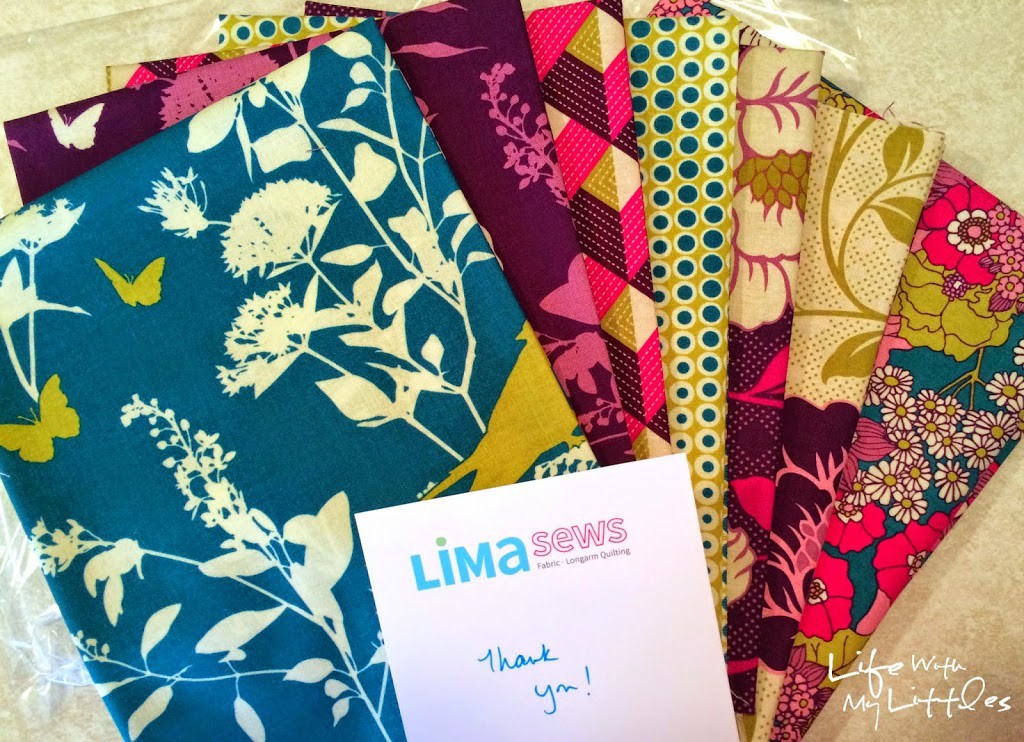
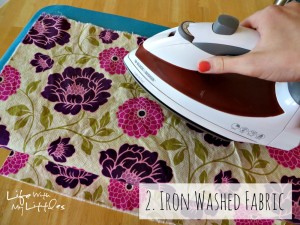
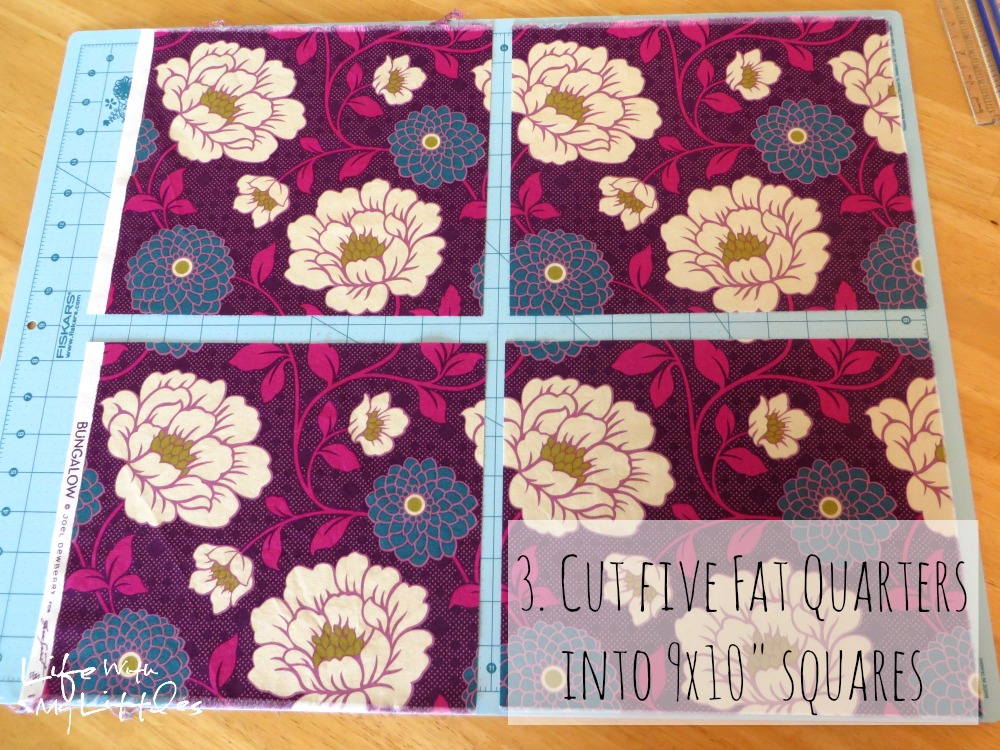
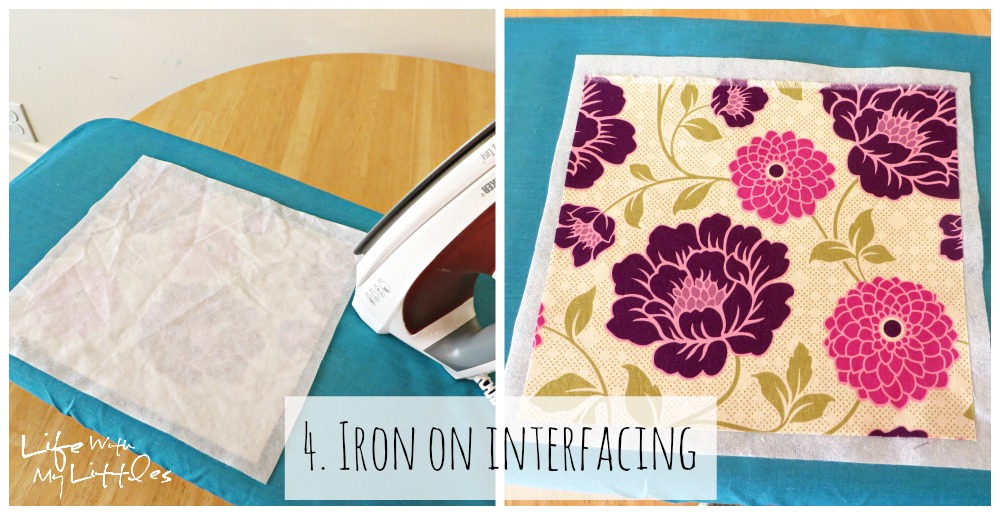
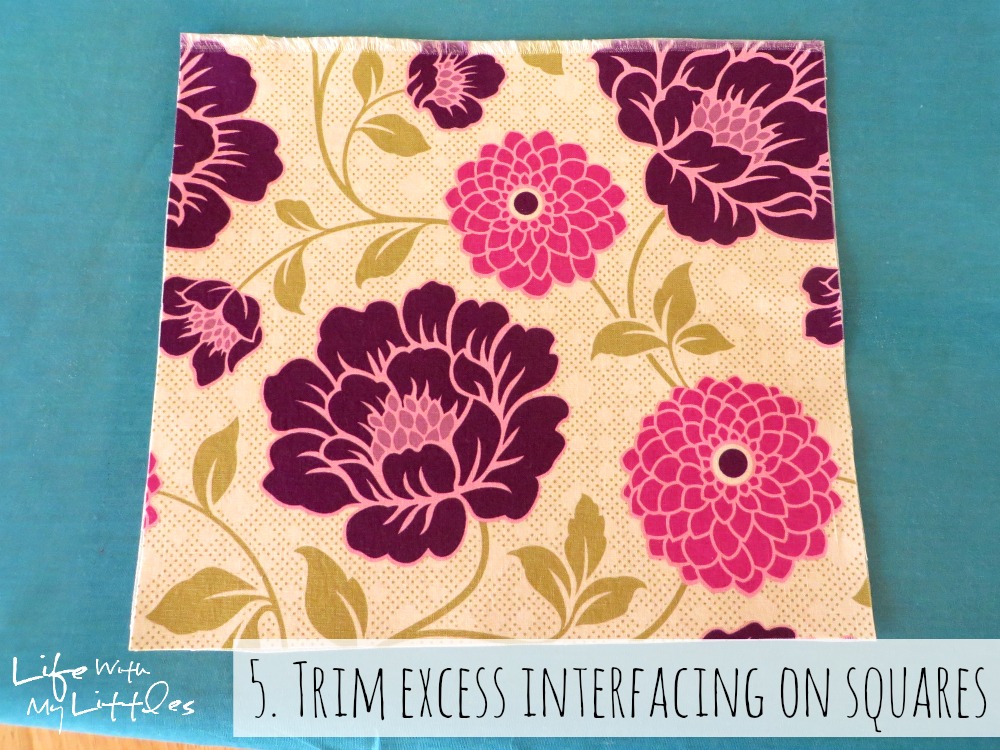
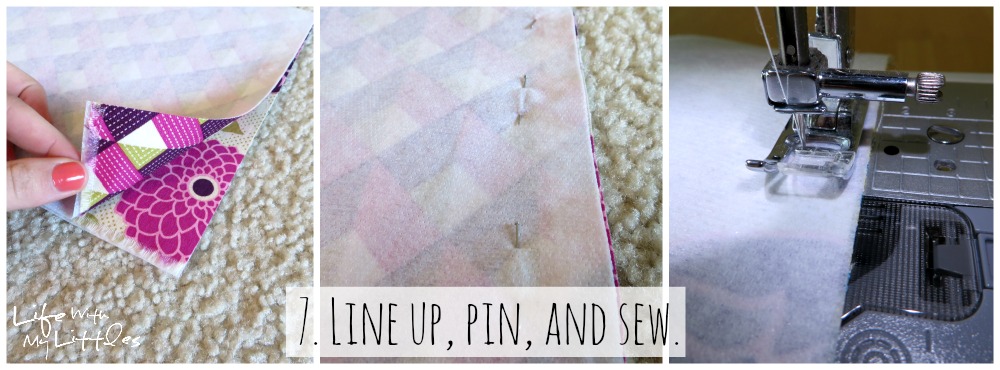
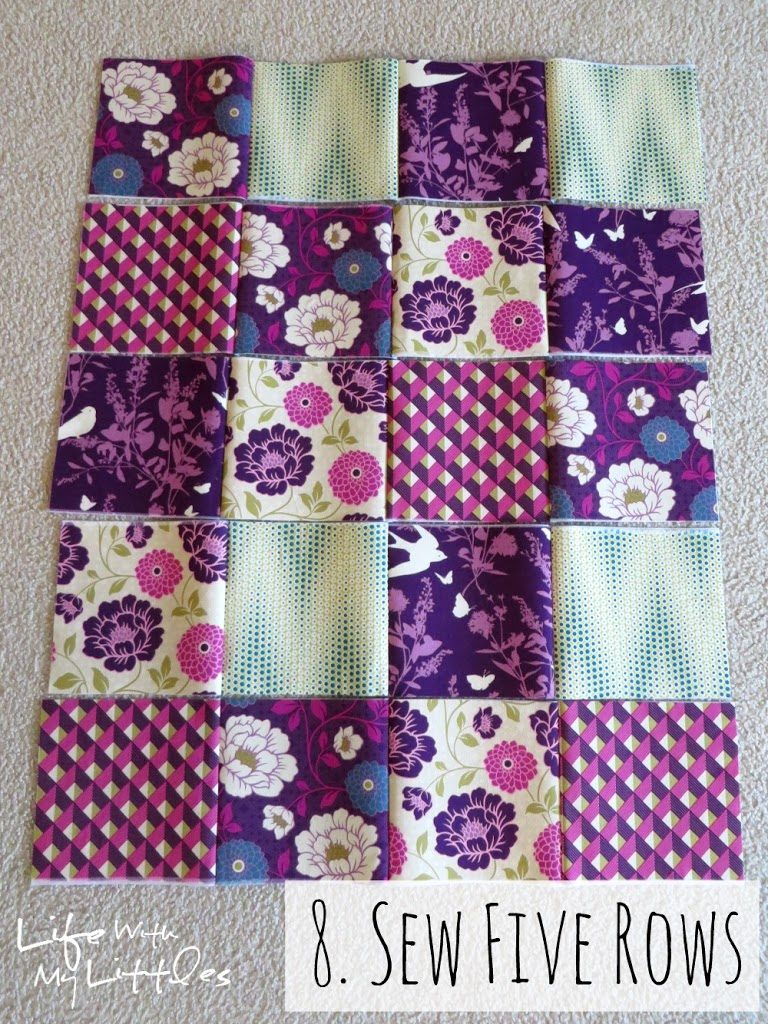
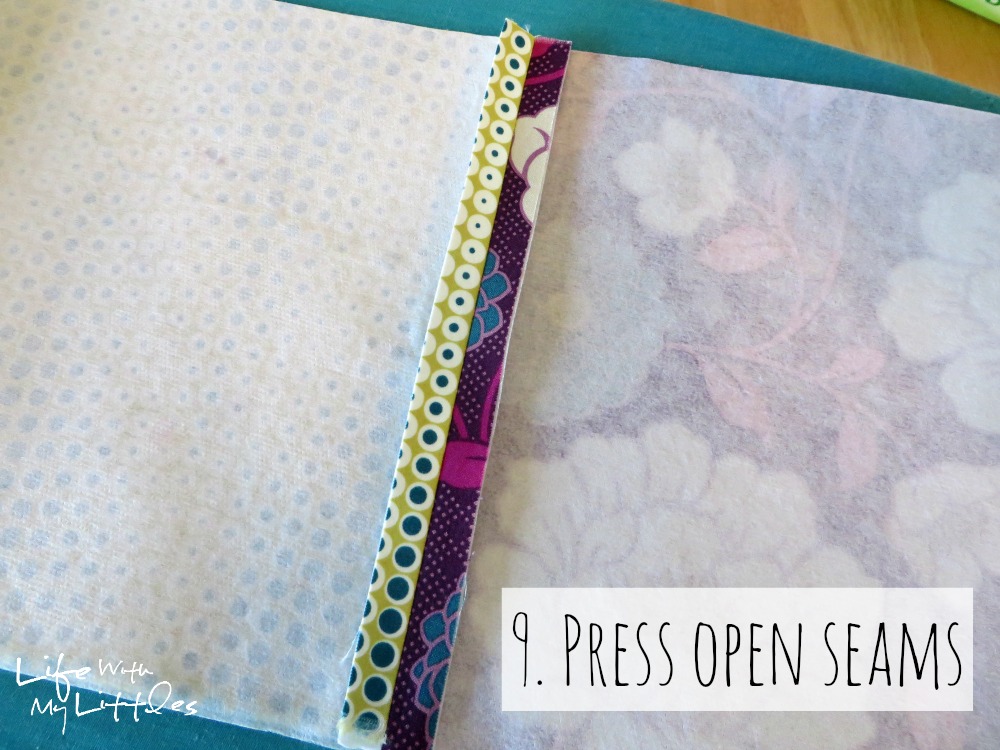
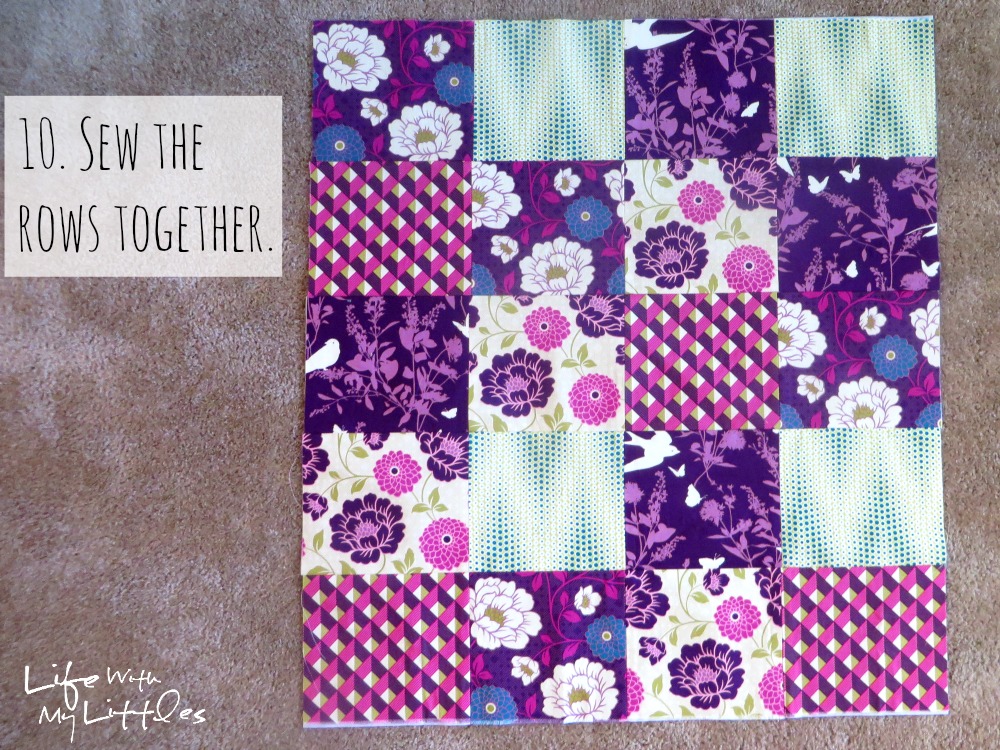
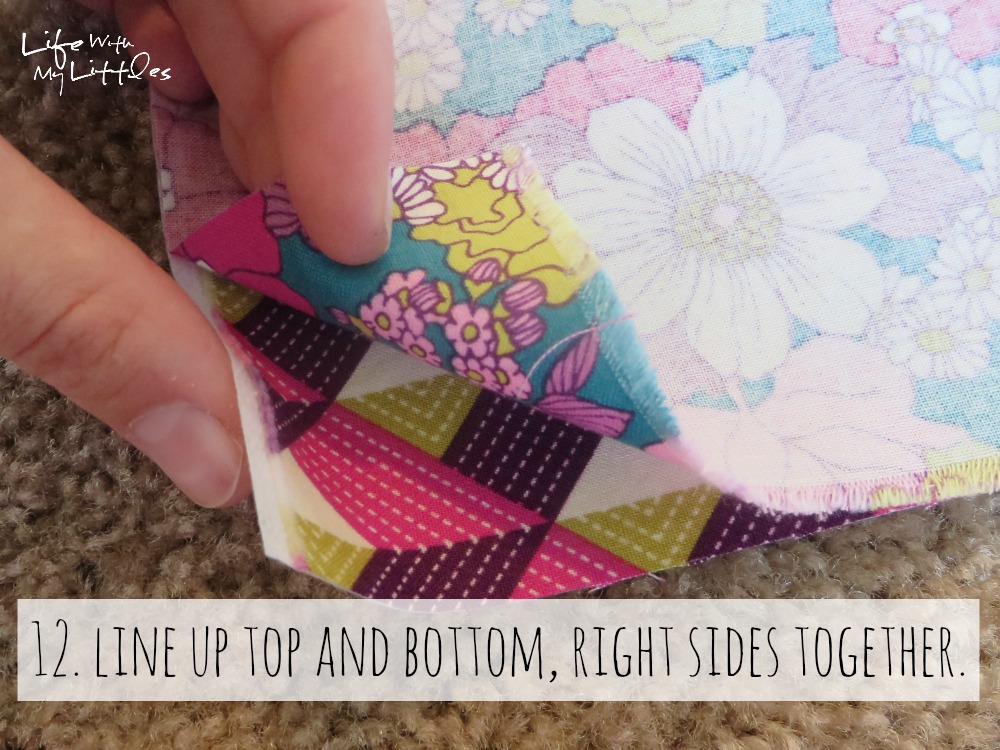
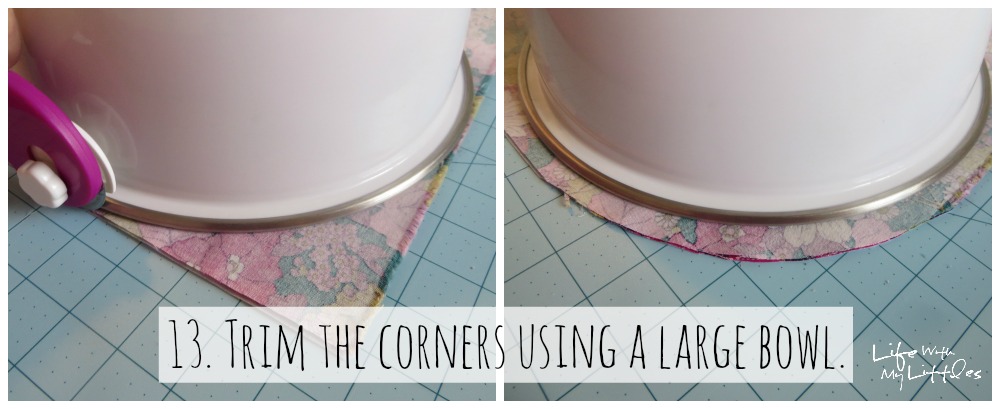
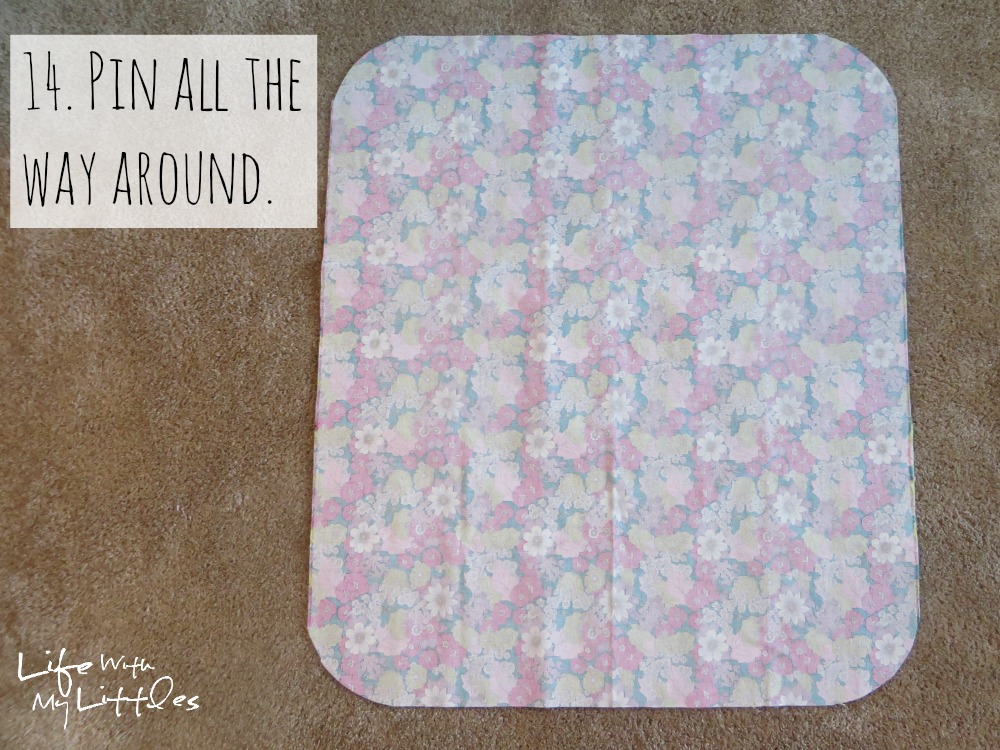
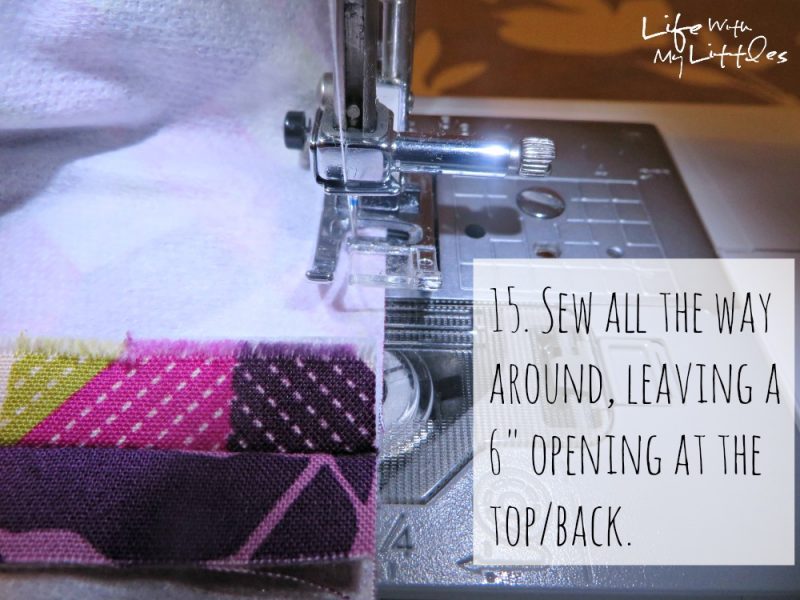
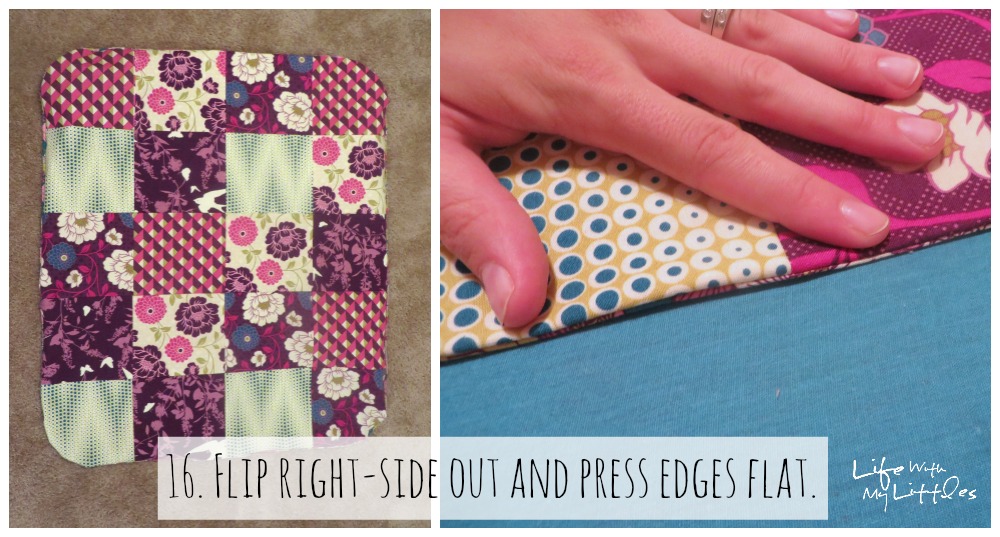
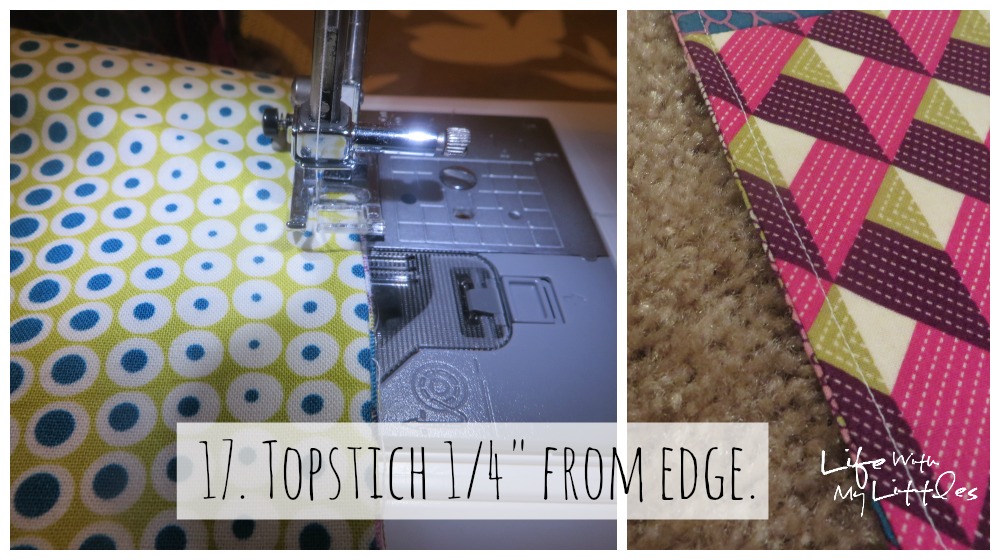
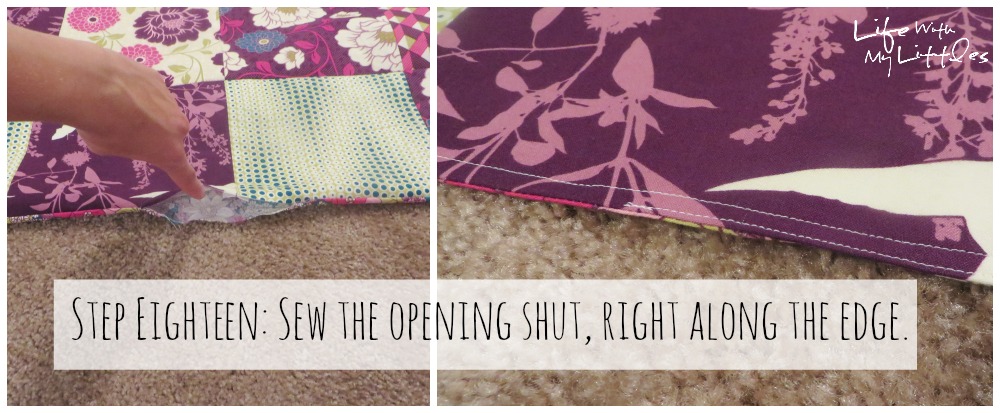
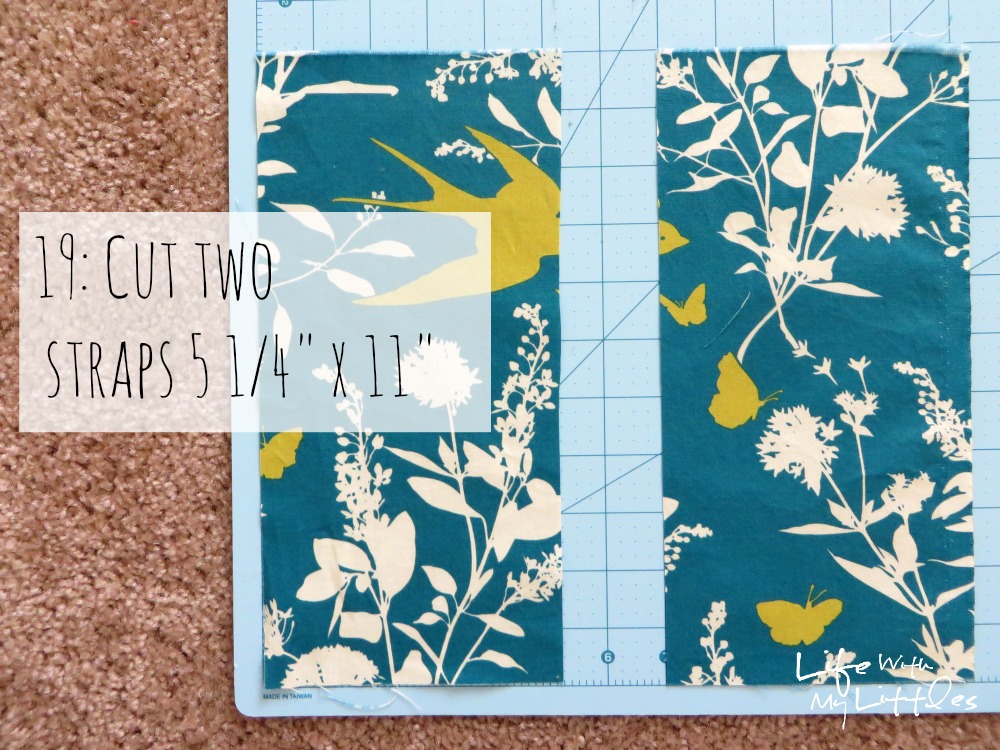
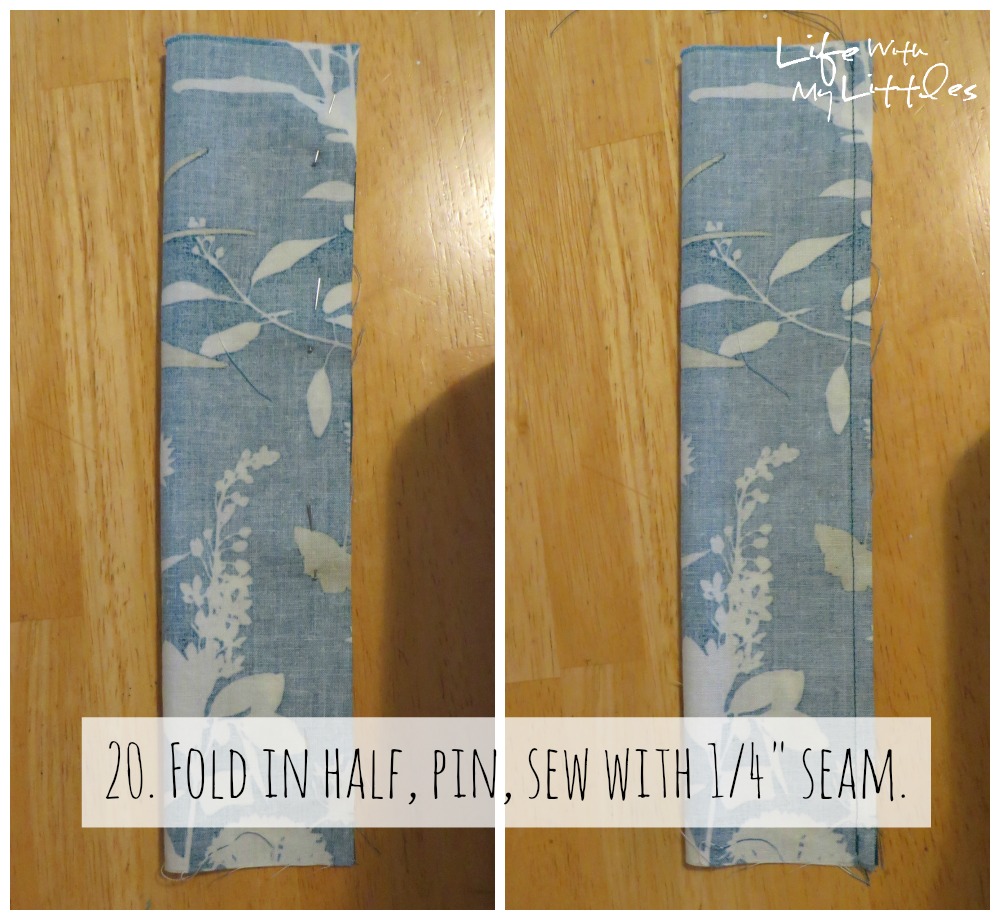
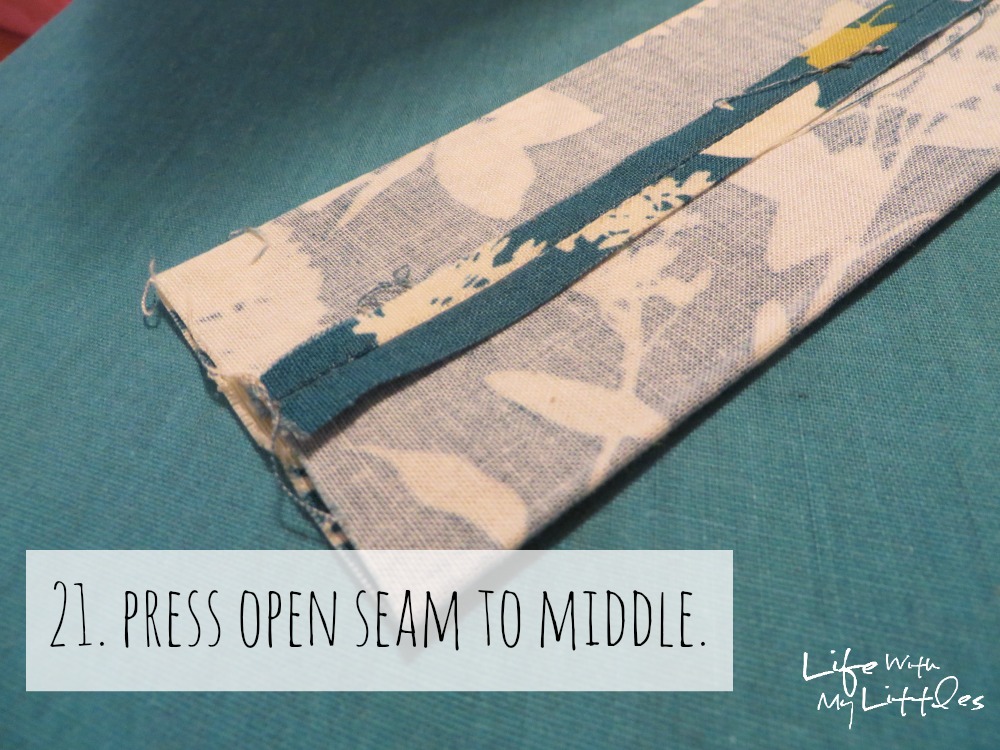
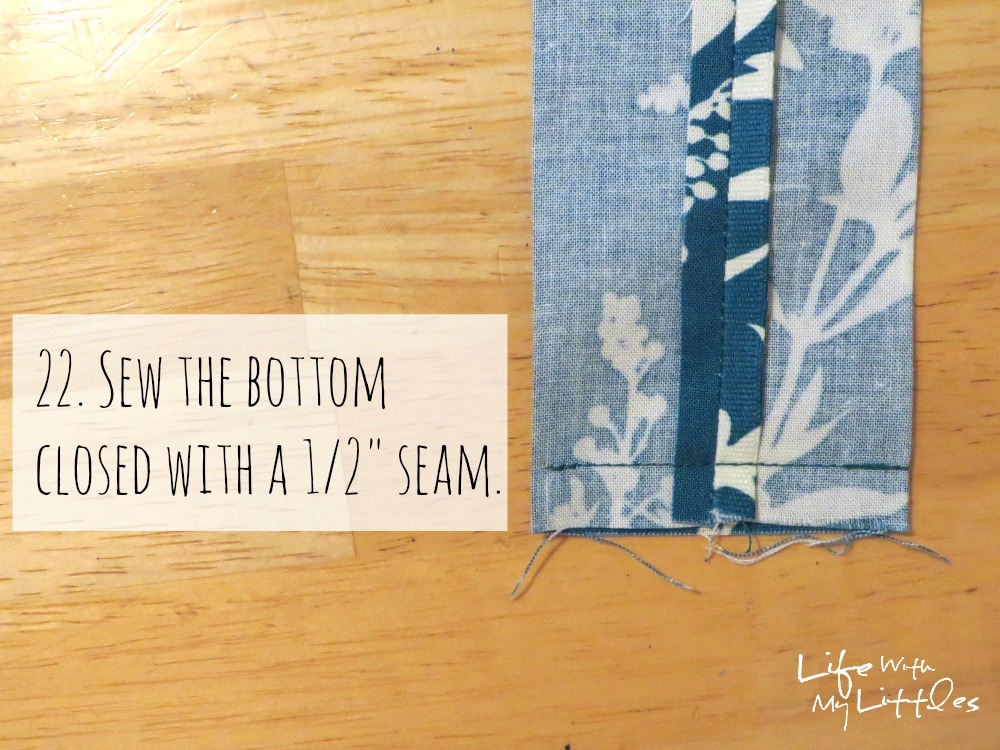
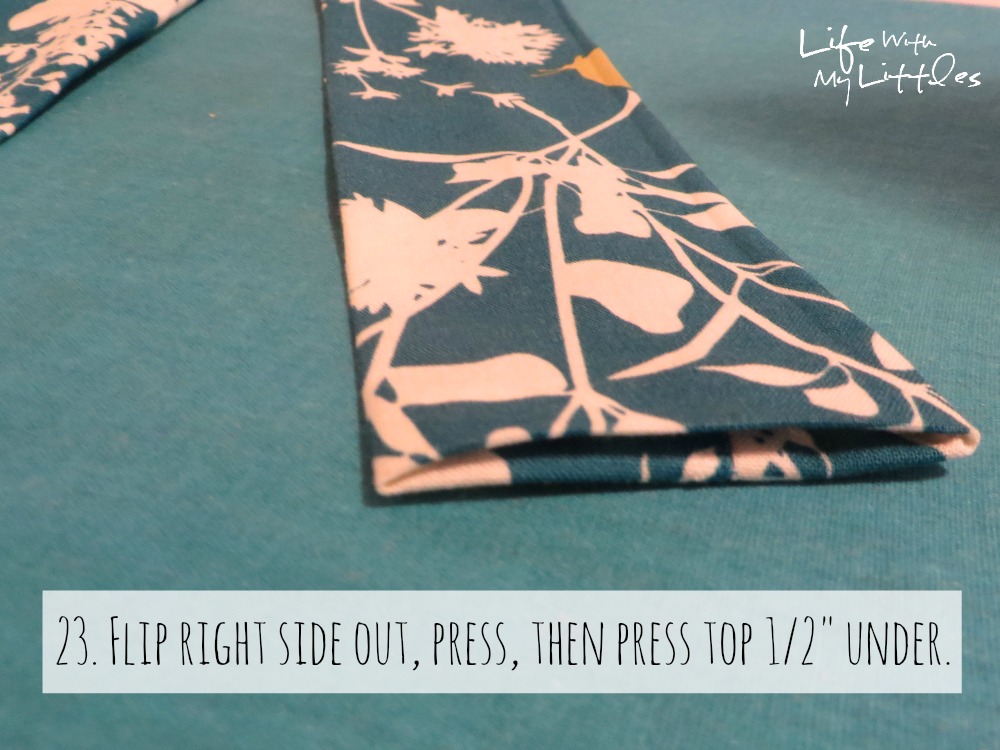
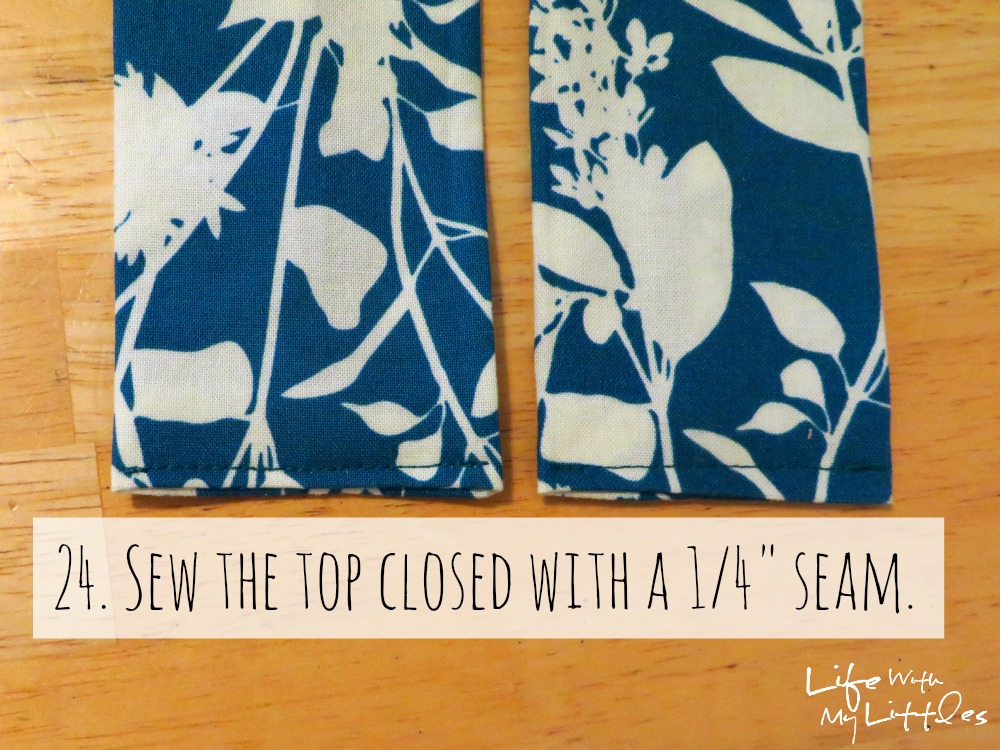
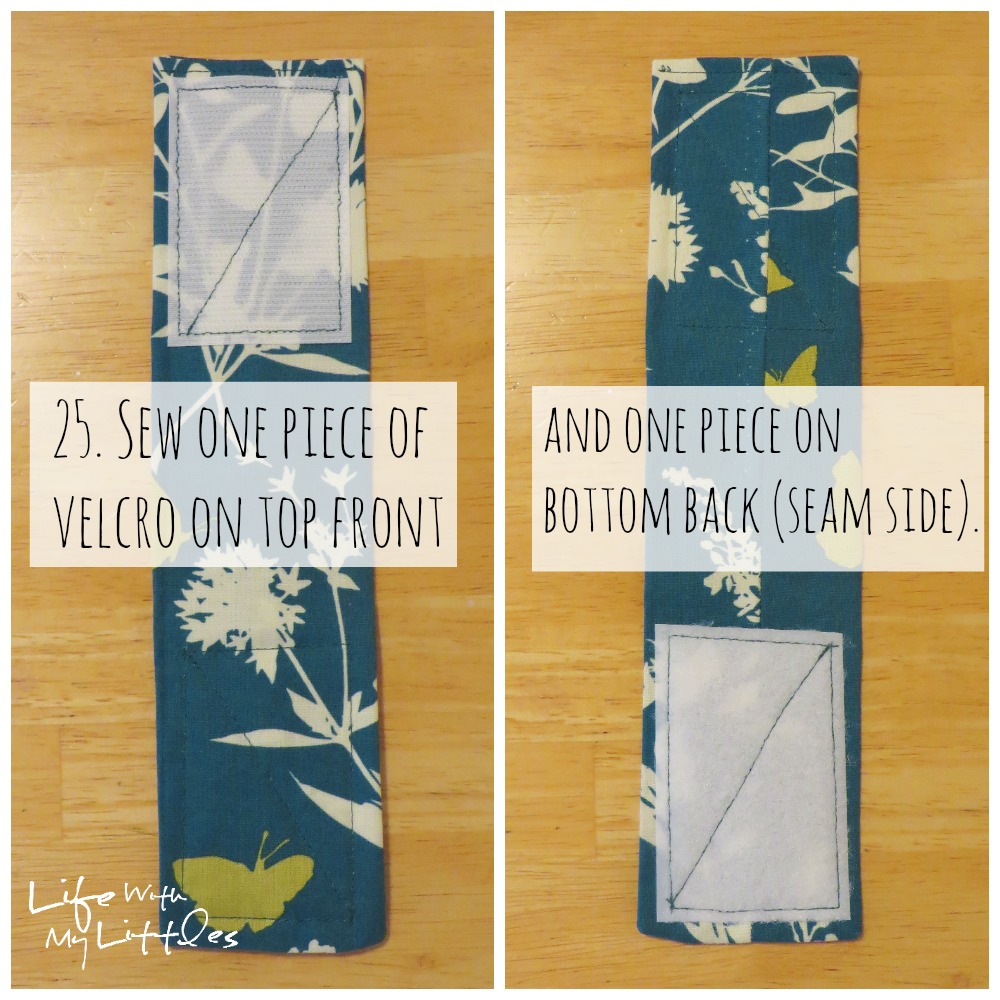
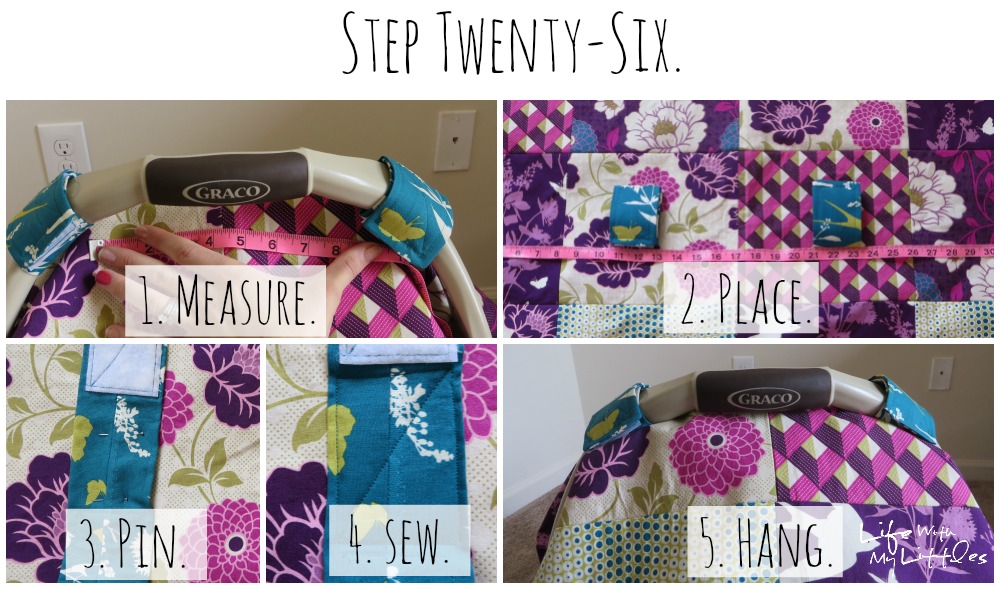
Gina says
This is beautiful!!!! I started sewing a year ago so I’m not TOO advanced just yet, but I think I can totally do this project 🙂 also, this might be a dumb question, but do you per wash your fabric (not the interfacing) in cold water or hot??
With flannel I usually use cold…so I just wanted to make sure the same would be used for the cotton 🙂
Thanks again
-Gina!
Chelsea Johnson says
Thanks! I wash it in whatever water I plan on washing it in later. I used hot for this one because I knew it would get dirty and I wanted to be able to wash it in hot without it shrinking.
Gina says
Awesome, thanks!
Chelsea Johnson says
You’re welcome!
Megan Furniss says
I just love the way you write your tutorials. Pics galore and it is super easy to follow! I did have to ask my sister what a top stitch was when I was making the boys car seat canopy you have. I just love your blog! Thanks for the tips and help!
Chelsea Johnson says
Thanks! I’m so glad I could help!!! And I seriously love hearing people say they love my blog, so thank you!!! And you’re welcome!
Billie Markowitz says
How far up on each side do you go to sew the tabs with velcro
Chelsea Johnson says
You have to measure it on the car seat cover.
Sandy lilli says
I came across your tutorial while looking to make a car seat cover. I teal like it and I just cut my interfacing out. I was making this for great granddaughter to be born shortly. My problem is they live three hr.away and I don’t know what size there car seat is. I want to surprise them with it. Do you have any suggestion on how I d
Should put on the loops? How far apart and what measurement from bottom. sjlilli@aol.com. Yes I agree with the other ladies about how easy it is to fallow your instruction.
Chelsea Johnson says
I actually don’t have the original cover, or the car seat anymore! My youngest is now almost five. I’m sorry I can’t be of more help!